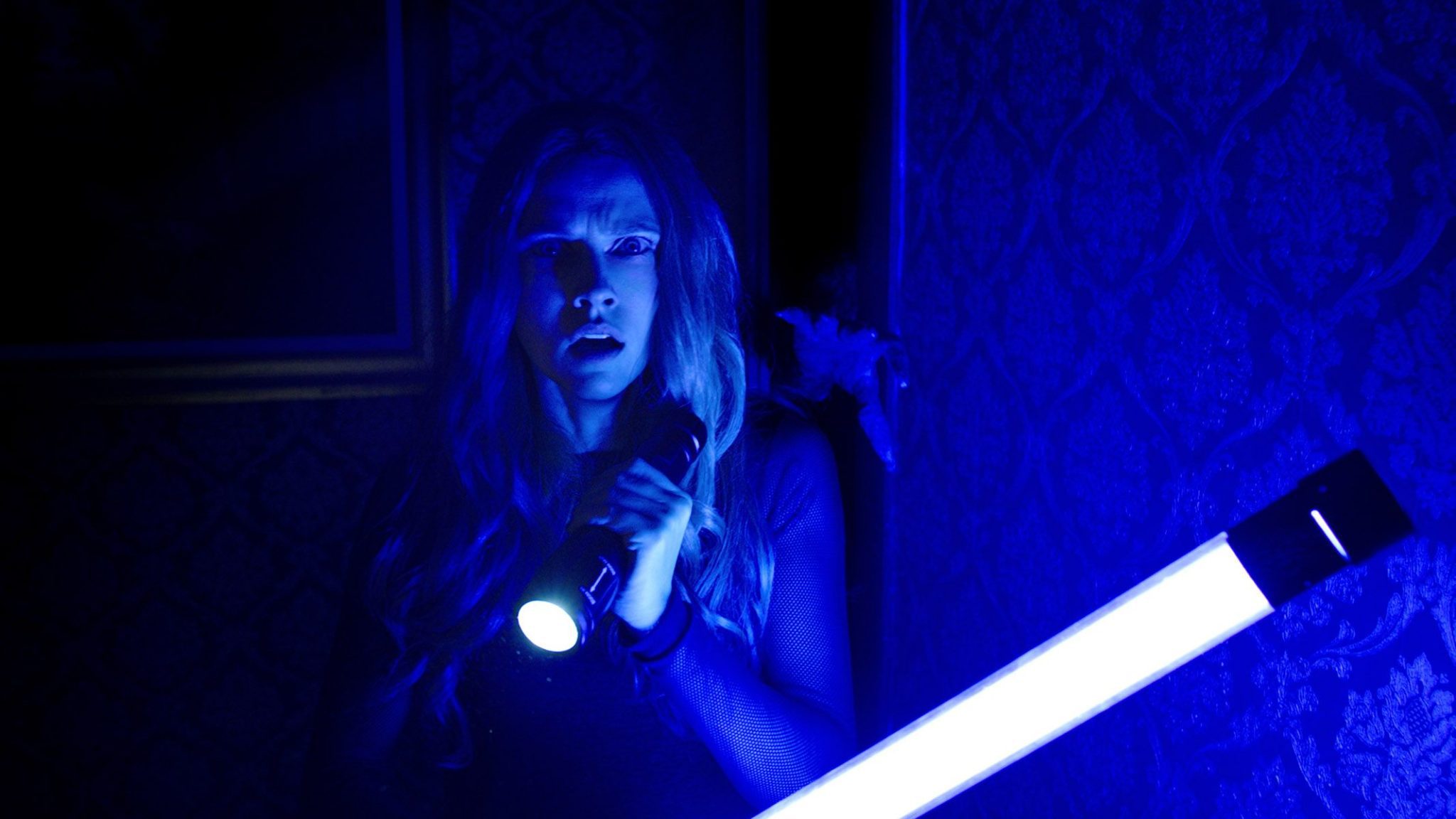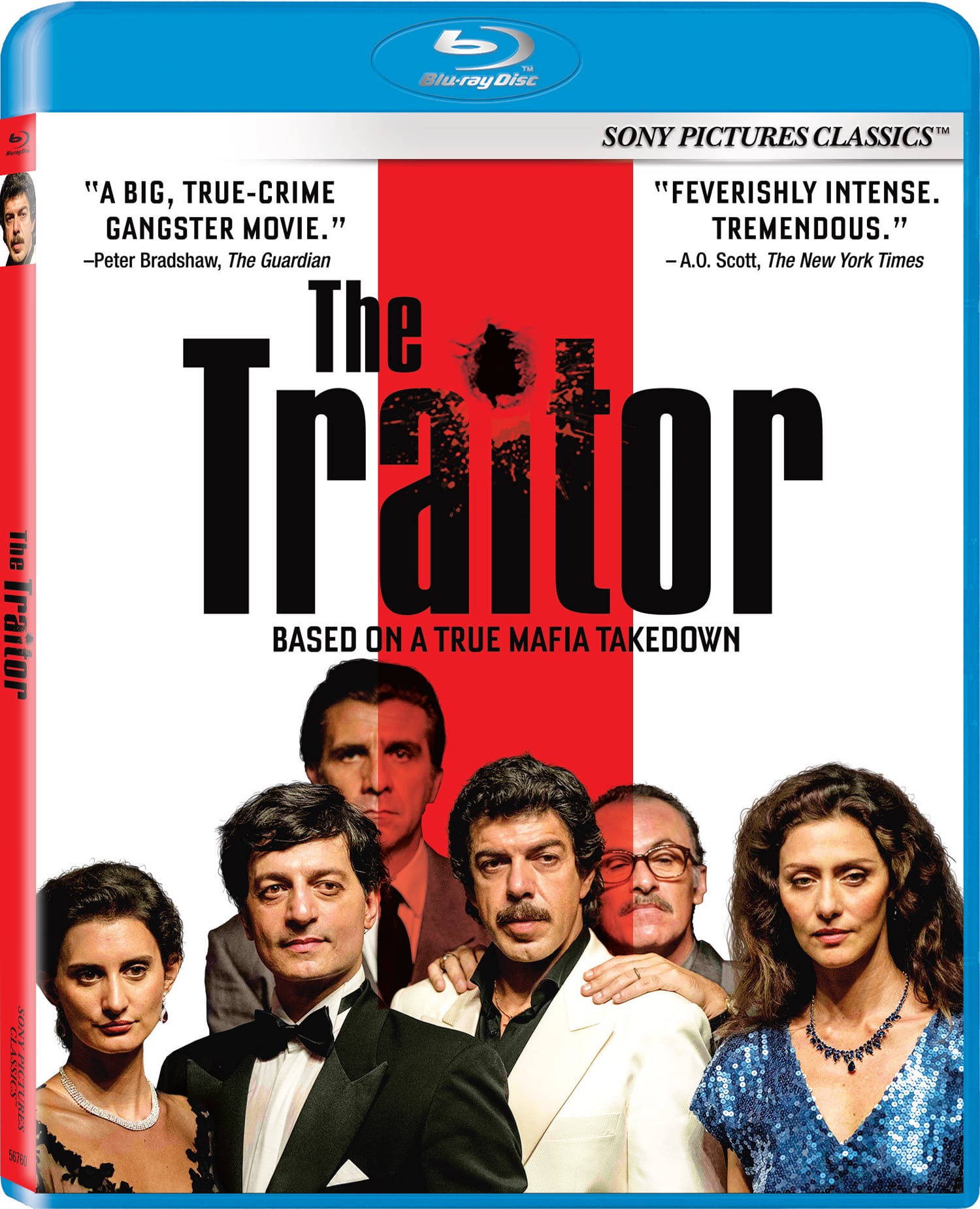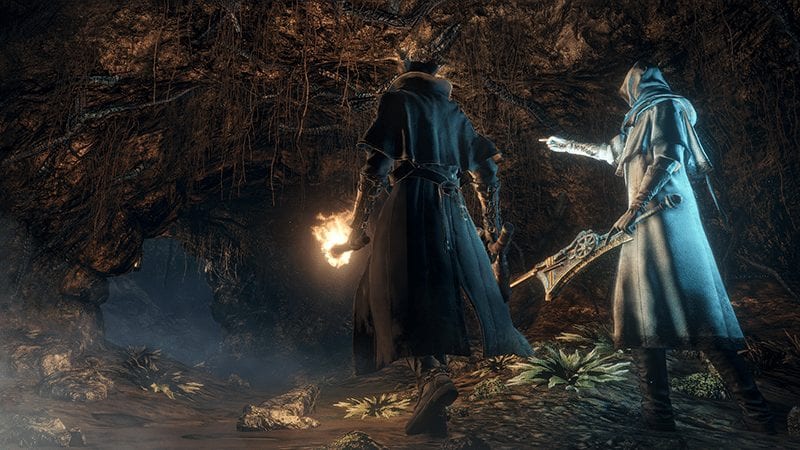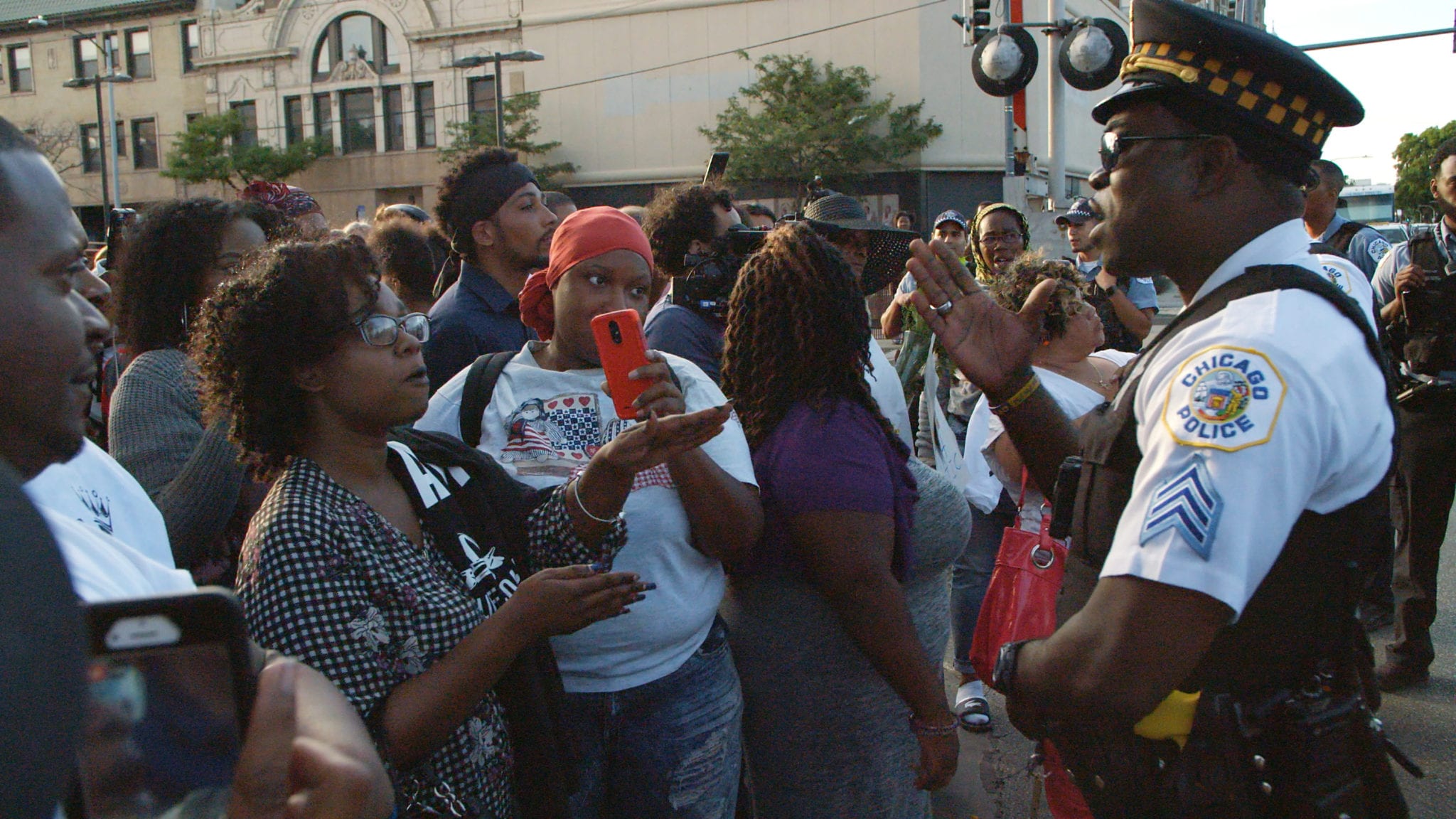Call it the potato chip effect.
If one is delicious, fifty must be amazing.
Or maybe you could label it the exercise effect.? If running three miles is healthy, running fifty must be exponentially more invigorating.
And you could most certainly call it the horror movie effect.
If the first one was good, the five sequels will be even better.? If the original kills were gruesome, the subsequent deathblows will mind-warping-ly nauseating.
Whatever you call it (big surprise, we?ll be referring to the horror one), it?s the idea that bigger is better and that if some were sufficient, more must certainly be glorious.
Nobody seems to ascribe to this philosophy than the aforementioned horror screenwriters and producers.? But sometimes, it?s not even about compounding carnage or exponential eviscerations.
Sometimes, it?s just about taking a really great, really small, really simple idea and blowing it way out of palatable proportions. ?The latest example is Lights Out, a pale one-and-a-half hour upsize of a stellar two-and-a-half-minute indie film.
The original short film premise was simple: a woman who appears to live alone is preparing to go to bed.? When she turns the lights off, she glimpses the silhouette of a shadowy figure at the end of the hall.? When she flips the lights back on, the figure is gone.? Another flip to darkness, and the shadow appears again.? Lights on, no shadow.? Lights off?you get the drift.? She finally makes it to the bed, and turns out the lights.? Then her door shuts on its own.? As she cowers beneath the covers, she timidly sneaks a hand out to click on her nightstand lamp.? Gradually, she peeks her head out to find the door open.? She breathes a sigh of relief, figuring she?d imagined the whole scenario.? Just then, she glances back to the nightstand to find a hairy, toothy goblin waiting for her.? He extinguishes the lamp and the credits roll. It?s a wonderful final-gotcha?-jump scare that works beautifully; so much so, that it?s garnered 3.5 million YouTube views.
So naturally, someone thought it would be worth capitalizing on.
Hopes were high as horror wunderkind James Wan (director of the highly successful The Conjuring films) was tapped to produce the big screen adaptation.? But not even he could save it from being a much more convoluted and unnecessary version of the source material.? The gimmick works great for a three-minute film, but wears thin after the big screen opening scene.? Though it wants to be part supernatural thriller, at its core, Lights Out is a fright film based solely around the jump scare (and there are plenty included in case you missed the first three or four).? The problem is, the jump scares cease being scary before we ever get to any of the supernatural explanation that seems rushed and incomplete.
It turns out that struggling single mom Sophie (Maria Bello) has been tormented by this lights on/off specter since she was a little girl in a mental institution and by the time the film begins, her fragile psyche is at a tipping point.
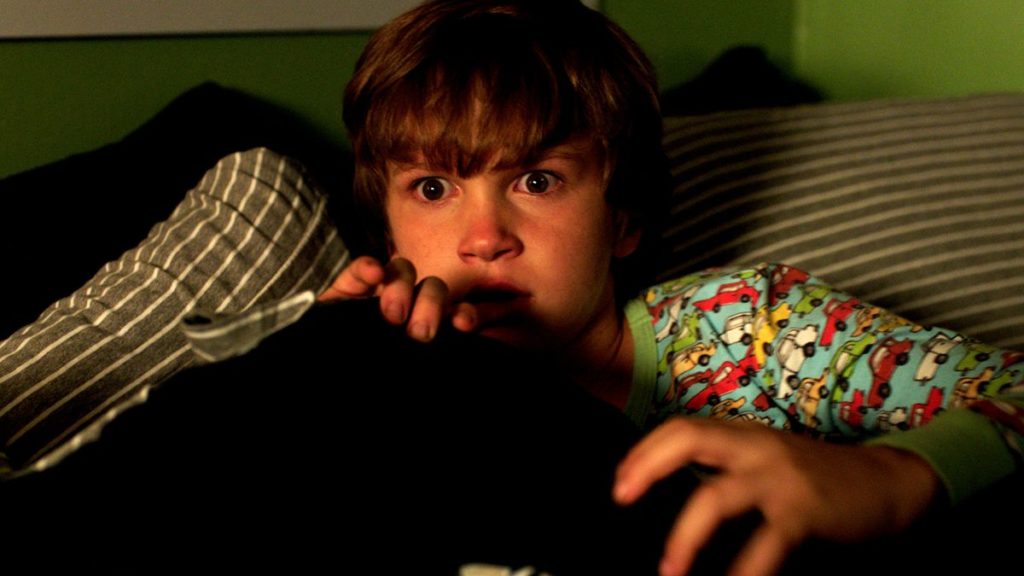
Husband Paul (Billy Burke) and daughter Rebecca (Theresa Palmer) left because they couldn?t handle her decline or the genuine manifestation of the very real, physically hostile shadow creature. ?Sophie?s son, Martin (Gabriel Bateman), her last vestige of hope for a familial connection, goes to stay with his estranged sister the dark figure begins to accost him.
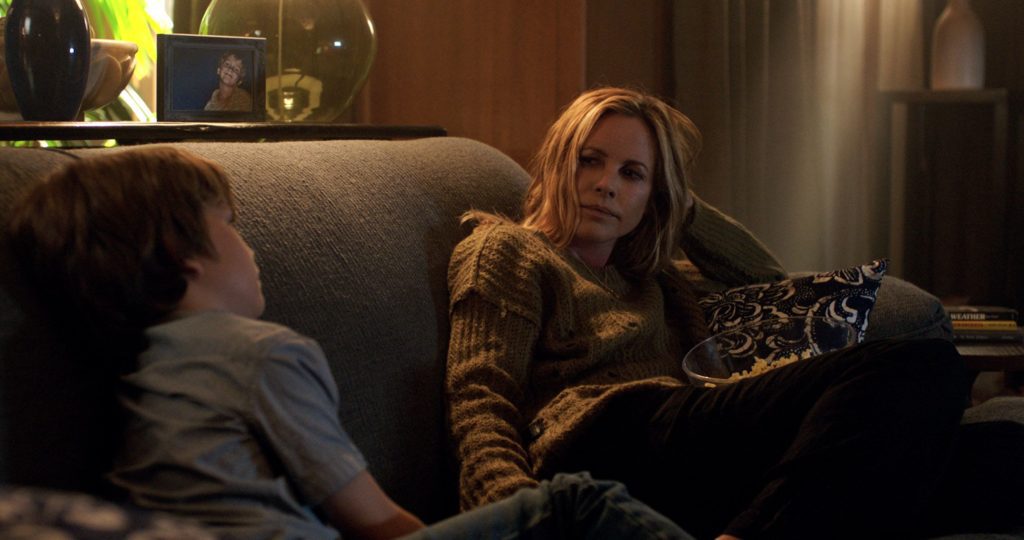
It?s then up to the kids to try and save mom from Diana?who turns out to be little more than a disappointing comic-book-style villain (SPOILER ALERT!!!): as a girl she suffered from a severe skin condition that left her physically vulnerable to light; an unsuccessful light-therapy cure attempt killed her, but left her ghost with the ability to thrive in darkness only?once the lights are on, she disappears.
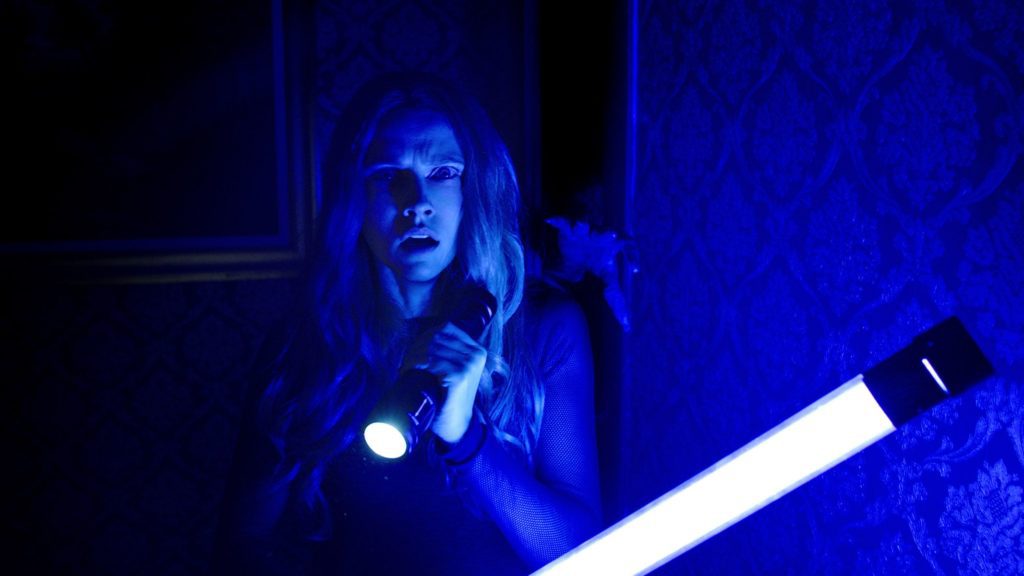
It comes off as an interesting premise, but not a scary one (but man, the crazy disco parties they could?ve had if they?d installed a strobe light and The Clapper).
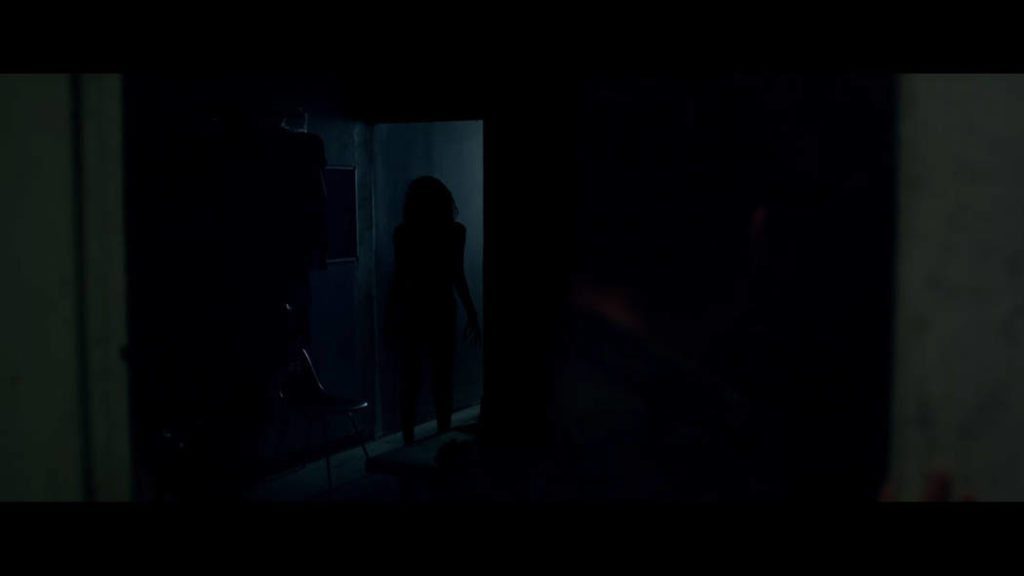
There is an underlying sense of family dynamics and a subtle allusion to the return of the prodigal?though it?s not the kids who have journeyed into the far country even though they?re the ones who left.? The true wanderer of the film is Sophie, because she?s allowed her strange relationship with Diana to overshadow her relationship with her family.? And when that light bulb finally goes off, Sophie realizes she may have to make the ultimate sacrifice to keep her kids from being overcome by the darkness.? In our side of reality, it was Christ who made the sacrifice, giving his life to save us from the all-too real horror of sin and death.? John employs a stunning visual to illustrate this miraculous gift as he personifies Christ this way:
“The light shines in the darkness, and the darkness has not overcome it.” (John 1:5).?
It is only through Christ’s work of salvation that we–or our world–can defeat the darkness.? And fortunately for us, it really is as simple as flipping a switch: believe, repent and follow.? Step toward the light.
And fortunately for the team behind Lights Out, it cleared $148 million worldwide and has been greenlit for a sequel.? So like it or love it, get ready: the sun?s not going down on the franchise anytime soon.
Crunch all you want, they?ll make more.

